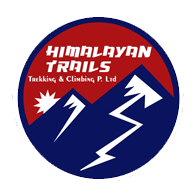Client’s Safety is on our Top Priority than any other agenda:
The client’s safety is always on top of any other agenda while organizing any kind of adventure trip trekking and climbing in the Himalaya. Our entire trek guides are First Aid Eco trained, experience, who works permanently with us, and every year we train and update their skills.
They are very good at a deal with any problems that may occur on any trip to make sure all of our clients have the best and safe holidays in Nepal. You can have entire confidence with our expertise and knowledge. The client’s safety is always on top priority than any other agenda on the Nepal trip. We carry along with an all-inclusive First Aid Kit each and every climbing and trekking trip. HTTC plan adventure journeys with safety and comfort are not a negotiation. AMS can be life intimidating while climbing or trekking in the Himalayas.
Acute Mountain Sickness
Generally, it happens when our body fails to acclimatize the cause of decreasing of Oxygen on the higher elevation above 3000meters. Himalayan Trails have been designed the itineraries professionally to minimize the effects of altitude sickness. All of our guides are Wilderness First Aid Course trained and recognize any symptoms to act accordingly on the spot. And of course, always First Aid Kits carried on all our treks. However, we do recommend better to take advice from your travel doctor or take a health adviser in advance.
Acute Mountains Sickness (AMS) Prevention:
- Allow enough time for acclimatization (above 3000meters)
- Don’t go too fast, too far, or don’t make the last climb.
- Drink clean water 3 -4 letters every day and drink more liquid soup, juice, tea, coffee, etc.
- No Smoking, Alcohol, and sleeping pills.
- Climb high and sleep low.
- Avoid getting sweat and cold
- Please follow the Guide or Leader advice
- Take guide or porter, don’t travel/ trek alone
- If symptoms are getting worse descent as soon as possible
- Never sent descent or leave the sick person alone
AMS symptoms generally can arise or feel above 3000 meters and present in the following ways:
- AMS (Acute Mountain Sickness) is common and is not life-threatening
- HACE (High Altitude Cerebral Edema) is a life-threatening illness that can develop from AMS
- HAPE is a life-threatening illness; it may occur on its own, or with AMS or HACE
- Symptoms of AMS and signs should expect but not worry
Headache (typically throbbing, often worse for bending over or lying down), PLUS one or more of the following symptoms:
- Tiredness, weakness, Dizziness, slight headache
- Loss of appetite, nausea (or vomiting)
- Restlessness, disturbed sleep, frequently wake up
Treatment
Take rest (don’t go higher than where you are if it is possible) at the same (or lower) altitude until the symptoms clear (up 3 to 4 days)
Drink enough water to keep your urine clearing up and plentiful
Use Proxy or Naproxen or similar, Ibuprofen, Paracetamol for headache
Consider Stemetil (or other anti-vomiting medication) for persistent nausea/vomiting
If AMS symptoms are severe, give oxygen (1 to 2 L/min) OR use a pressure bag until symptoms clear
Check the victim regularly for signs of HAPE and HACE, especially during at night
Descend far enough to clear symptoms (at least 500 to 700m) if symptoms of AMS do not increase or not to get worse.
Facts on HAPE and HACE
- HACE or HAPE occurs in roughly 1 or 2% of people going to high altitude
- HAPE and HACE may occur alone or together
- HAPE is generally twice as common as HACE
- HAPE causes much more deaths than HACE
- HAPE may appear without any preceding symptoms of AMS
- HAPE is more likely in people with colds or chest infections
- HAPE often can come after the second nights spent a higher elevation
- HAPE can develop even after descending from a higher elevation
- HACE usually develops after symptoms of AMS have appeared and often gets rapidly worse during the night
- HACE may develop in the later stages of HAPE
HACE (High Altitude Cerebral Edema)
Symptoms of HACE are caused by an accumulation of fluid in or around the brain. Typically symptoms and signs of AMS become worse and HACE develops. Someone with HAPE may also develop HACE.
Signs and Symptoms
Severe headache, which often feels worse on lying down and is not relieved by ibuprofen, paracetamol
Tiredness, severe fatigue, Nausea and or vomiting which may be severe and persistent
Loss of coordination, clumsiness: The victim needs help with simple tasks such as tying their shoelaces or packing their bag. They cannot do the finger-nose test
Staggering, falling. They cannot do the heel to toe walking test or the standing test
Blurred or double vision, seeing haloes around objects
Loss of mental abilities such as memory: They cannot do a simple mental arithmetic test
Confusion, hallucinations
Change in behavior (aggression, apathy, etc.)
Drowsiness, difficult to wake up, coma, death
General Tests for HACE
Heel-to-toe walking test: The victim is asked to take 10 very small steps, placing the heel of one foot to the toes of the other foot as they go. Reasonably flat ground is necessary and the victim should not be helped
Standing test: The victim stands with eyes closed, feet together and arms by their sides
Finger-nose test: With eyes closed, the victim repeatedly and rapidly alternates between touching the tip of their nose with an index finger then extending this arm to point into the distance (a useful test if the victim is in a sleeping bag)
Mental arithmetic test: Give the victim a mental arithmetic test, eg. subtract 7 from 100, 7 from 93, and so on (but remember some people may be poor at arithmetic even at sea level)
If the victim cannot do any of the above tests easily (or refuses to cooperate), or show excess wobbling or falling over in the two first tests (be prepared to catch the victim if they fall over!), assume they are suffering from HACE. If in doubt about the victim’s performance, compare it with a healthy individual. Be prepared to keep repeating these tests.
High Altitude Pulmonary Edema (HAPE)
Symptoms of HAPE are due to the accumulation of fluid in or around the lungs. It may appear on its own without any preceding symptoms of AMS (this happens in about 50% of cases), or it may develop at the same time as AMS. HAPE can easily be mistaken for a chest infection or asthma: if in doubt treat for both.
Signs and Symptoms
A reduction in physical performance (tiredness, severe fatigue) and a dry cough are often the earliest signs that HAPE is developing
Breathlessness, in the early stages of HAPE, this may mean just taking a bit longer to get one breath back on resting after mild exercise. Later on, there is a marked breathlessness with mild exercise. Finally, breathlessness occurs at rest. Record the respiratory rate (NB: At 6000m/19700ft, class “normal, acclimatized respiration rate is up to 20 breaths per minute)
The dry cough may later become wet with frothy sputum, which may be bloodstained (pink or rust-colored). This is a serious sign
Wet sounds in the lungs when breathing in deeply (place your ear on the bare skin of the victim back below the shoulder blades; compare with a healthy person). Note: There may be NO wet sounds in even quite severe HAPE: this is called dry HAPE.
There may be: mild fever up to 38.5 C, a sense of inner cold, pains in the chest
Blueness or darkness of face, lips, tongue or nails due to lack of oxygen in the blood (cyanosis)
Drowsiness, difficulty waking up, coma, death
In Our Medicine box:
- Acute Mountain Sickness – Diamox, dexamethasone
- Pain Killers (analgesics) – Paracetamol, Ibuprofen, Proxen, Naproxen or similar
- Antibiotics (infection) – Amoxycillin, Ciprofloxacin, Cotrimoxazole, Doxycycline, Tinidazole, Antiseptics (disinfectant) – Dettol, iodine solution, Burn cream (Silvazine, Burnol).
- Eye and Ear Infection – Chloramphenicol
- Fungal infection – Miconazole
- Nausea and vomiting-Stemetil
- Indigestion – Antacid tablets
- Constipation – Durolax
- Anti Motility – Immodium, Lomotil
- Acute Mountain Sickness – Diamox, dexamethasone, Respiratory Medication – Sinutab, lemotab, Asthma spray.
- Anti Allergy and Anti Inflammatory: Hydrocortisone cream Calamine, Polaramine
- Instruments – Thermometer, tweezers, scissors
- Dressing and wound: cotton buds and roll, square and sterile gauze, triangular, adhesive and elastic bandages





